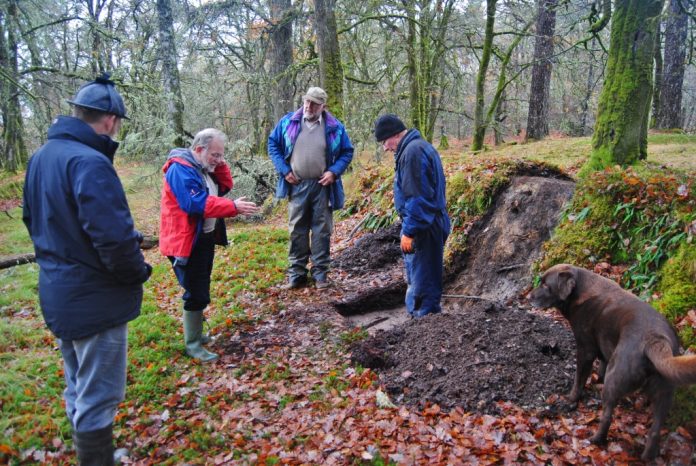Banquo’s Walk has been named after the semi-historical figure Banquo, Thane of Lochaber. He features most notably in Shakespeare’s Macbeth, in which the witches prophesies that his sons will be great kings. James VI named Banquo as an ancestor since his sons allegedly headed the Stuart line of kings. Ultimately there is speculation as to whether Banquo was a real person or not, but there is much local folklore associated with him in this particular arearegardless. The site is described in the 1872 Ordnance Survey Name Books for the Parish of Kilmallie;
The old Castle of Tor-Castle is by the natives of the place Tigh Bhancoi. ‘Banquo’s house’. There is a walk by the Lochyside to the North of Tor Castle known as Sràid Bhanco, i.e. ‘Banquo’s Walk’; and the small green field close by the Castle is called Dail a’ Chait i.e. ‘The field of the Cats’ where Banquo is said to have gone through a mode of ‘Divination’ by means of placing a Cat on an iron spit & torturing him until the ‘Taing[?] of the Cats’ – a powerful spirit, or demon came forward, and on condition of getting his subject released revealed future to the questioner. The site is erroneously styled ‘Togarma’ by Sir Walter Scott in a note to the Lady at the Lake. The correct designation is Tigh-ghairm nan Cat; i.e. ‘The House of Invocation of the Cats.’
Banquo’s Walk is listed on the Highland Historic Environment Record (HHER No. MHG49216) and on the National Sites and Monuments Record (NN17NW 53), referring to Mart Miers’ description in 2008 as an avenue of unclear origin and date believed to have been a ceremonial approach to the old castle. The record suggests that the site was more probably related to improvements of the Lochiel Estate.
Local group with AOC support
Today, intriguingly only a 415m long section of the 8m wide road survives. In this section, alignments of substantial built banks or walls, lined the sides of the route, with traces of probable ditches on the interior in places. Under the leadership of Lochaber Archaeological Society assisted by AOC, excavation was undertaken across one linear trench and four additional small trenches to assess the form and function of this very wide route.
A surprise in store
The results revealed, surprisingly, that no road surface was present on Banquo’s Walk. Excavation came straight on to traces of a natural clay and sand-clay subsoil. The banks were revealed to have been constructed mostly of a mixed sand-clay subsoil overlying a turf then clay base over the sand-clay subsoil. Up to 0.8m high, the banks were almost vertically faced on the inside and sloping more gently to a much higher ground surface on the outside. There were no built ditches discovered on the inside. The investigation has revealed, somewhat controversially, that the site indeed contained no evidence for having been a built road or ceremonial route.
Test pits revealed that the natural stratigraphy on the outside contained a topsoil layer overlying a natural subsoil comprising a thick clay band over a sand-clay subsoil. The banks to both sides contained upcast subsoil overlying this natural layering. Given the significantly lower level of the interior surface, containing only thin traces of clay on the subsoil, interpretation of the results is that this wide, bank-lined section of ‘Banquo’s Walk’ represents a substantial use for clay extraction – possibly by the nearby builders of the Caledonian Canal.
Find more news on the AOC website: http://www.aocarchaeology.com/news/


